Executions at that time took place either by hanging for thieves and low-level criminals, or by decapitation, which could be done as in England and Central Europe either by means of a justice axe, or by using a sword when the executioner was sufficiently skilled.
BLADE: this is the characteristic blade of execution swords. It has a wide, flattened lenticular section, with two edges. A central fuller occupies the first 22 centimeters of the blade. It is surrounded by particularly well engraved plant interlacing. In this fuller, we find the inscription:
On the external face "* MEMENTO * MORI * »(= REMEMBER THAT YOU ARE MORTAL)
And on the internal face " MÜNICH 1651" This spelling of "Münich" is quite logical since the old name of the city was Münichen in the Middle Ages, which changed to Münich in "Low German" langage and finally München in the modern era.
In the extension of the inscriptions, we find engravings: On the external face a gallows from which a condemned man is hanged, the whole surmounted by the inscription "IUSTICIA", surrounded by plant motifs. On the other face, a wheel of justice, surmounted by a partly worn Teutonic cross.
At the heel of the blade, we find a swordsmith's mark consisting of two crescent moons in the same direction. This mark could correspond to Wolfgang Stanler of Munich, but other blade makers also used these crescent moon marks.
Blade length 83.5 cm, width at the heel of the blade = 5.7 cm, thickness at the heel 7.9 mm
CROSS GUARD It is an iron guard with wide twisted quillons.
POMMEL: It is in the shape of a spherical baluster, with a small chiseled decoration at the base.
GRIP : It is covered with leather which is probably the original leather. At each end of the grip, thick iron ferrules.
Justice swords are rare on the market, and generally quite poorly decorated. The quality of the chiseling on the blade of this one increases its interest even more.
Free shipping France and Europe
Ref AM-2314









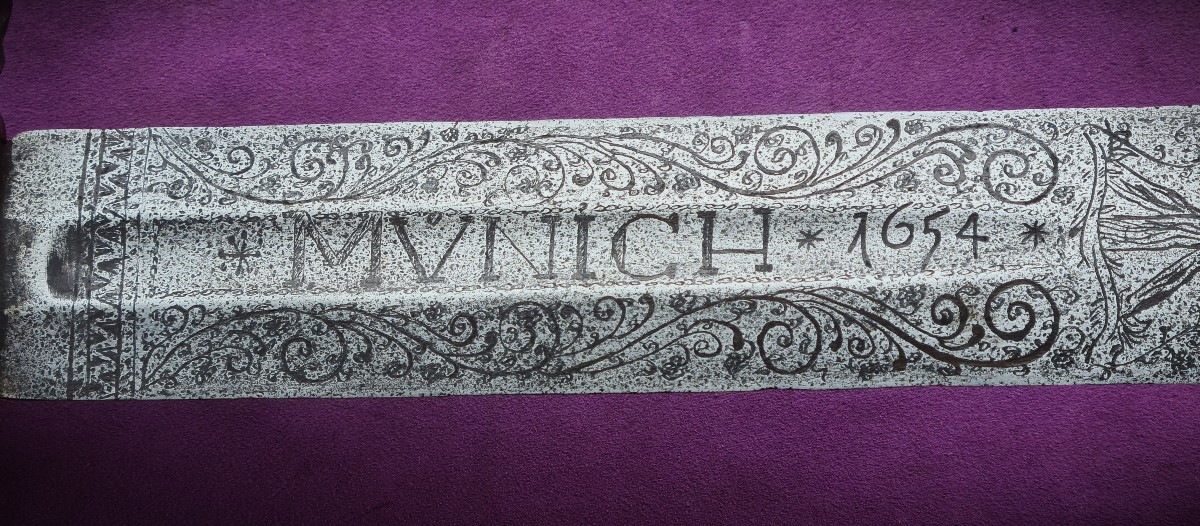

















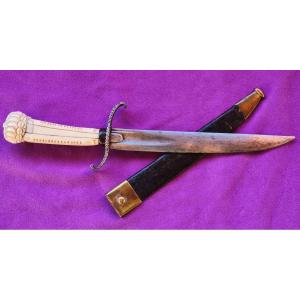





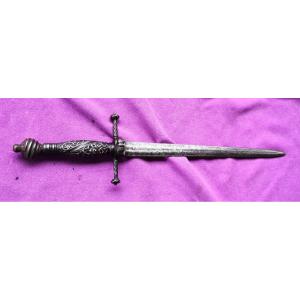
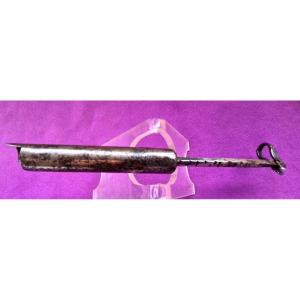


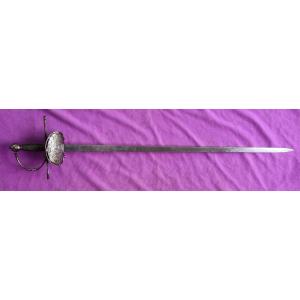
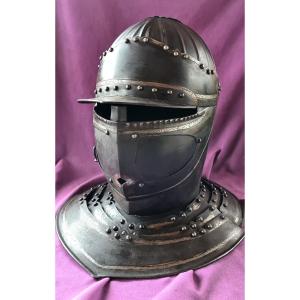


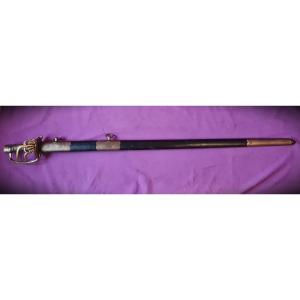

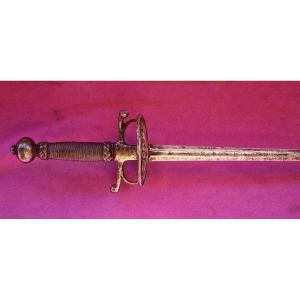


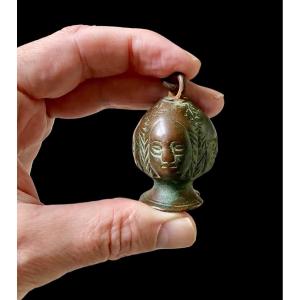



 Le Magazine de PROANTIC
Le Magazine de PROANTIC TRÉSORS Magazine
TRÉSORS Magazine Rivista Artiquariato
Rivista Artiquariato